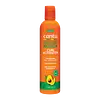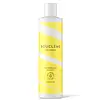What's inside
What's inside
 Key Ingredients
Key Ingredients

 Benefits
Benefits

 Concerns
Concerns

 Ingredients Side-by-side
Ingredients Side-by-side

Water
Skin ConditioningGlycerin
HumectantCetearyl Alcohol
EmollientPanthenol
Skin ConditioningPersea Gratissima Oil
Skin ConditioningButyrospermum Parkii Butter
Skin ConditioningStearyl Alcohol
EmollientCetyl Alcohol
EmollientPolyquaternium-10
Parfum
MaskingBehentrimonium Methosulfate
Phenoxyethanol
PreservativePolysorbate 60
EmulsifyingGlycine Soja Oil
EmollientPolyquaternium-11
Olea Europaea Fruit Oil
MaskingLinalool
PerfumingHexyl Cinnamal
PerfumingEthylhexylglycerin
Skin ConditioningCanola Oil
EmollientBenzyl Salicylate
PerfumingCitric Acid
BufferingSilk Amino Acids
HumectantGeraniol
PerfumingCaprylyl Glycol
EmollientSodium Benzoate
MaskingBenzyl Alcohol
PerfumingHelianthus Annuus Seed Oil
EmollientLecithin
EmollientAscorbyl Palmitate
AntioxidantArgania Spinosa Kernel Oil
EmollientCocos Nucifera Oil
MaskingDaucus Carota Sativa Seed Oil
EmollientMacadamia Integrifolia Seed Oil
Skin ConditioningMangifera Indica Seed Butter
Skin ConditioningMangifera Indica Seed Oil
EmollientMelia Azadirachta Seed Oil
EmollientPrunus Amygdalus Dulcis Oil
Skin ConditioningSimmondsia Chinensis Seed Oil
EmollientVitis Vinifera Seed Oil
EmollientTocopherol
AntioxidantAloe Barbadensis Leaf Juice
Skin ConditioningMacrocystis Pyrifera Extract
Skin ConditioningSalvia Officinalis Leaf Extract
CleansingUrtica Dioica Leaf Extract
Skin ConditioningLonicera Caprifolium Extract
AstringentVitis Vinifera Seed Extract
AntimicrobialPotassium Sorbate
PreservativeHydrolyzed Silk
HumectantWater, Glycerin, Cetearyl Alcohol, Panthenol, Persea Gratissima Oil, Butyrospermum Parkii Butter, Stearyl Alcohol, Cetyl Alcohol, Polyquaternium-10, Parfum, Behentrimonium Methosulfate, Phenoxyethanol, Polysorbate 60, Glycine Soja Oil, Polyquaternium-11, Olea Europaea Fruit Oil, Linalool, Hexyl Cinnamal, Ethylhexylglycerin, Canola Oil, Benzyl Salicylate, Citric Acid, Silk Amino Acids, Geraniol, Caprylyl Glycol, Sodium Benzoate, Benzyl Alcohol, Helianthus Annuus Seed Oil, Lecithin, Ascorbyl Palmitate, Argania Spinosa Kernel Oil, Cocos Nucifera Oil, Daucus Carota Sativa Seed Oil, Macadamia Integrifolia Seed Oil, Mangifera Indica Seed Butter, Mangifera Indica Seed Oil, Melia Azadirachta Seed Oil, Prunus Amygdalus Dulcis Oil, Simmondsia Chinensis Seed Oil, Vitis Vinifera Seed Oil, Tocopherol, Aloe Barbadensis Leaf Juice, Macrocystis Pyrifera Extract, Salvia Officinalis Leaf Extract, Urtica Dioica Leaf Extract, Lonicera Caprifolium Extract, Vitis Vinifera Seed Extract, Potassium Sorbate, Hydrolyzed Silk
Water
Skin ConditioningGlycerin
HumectantAloe Barbadensis Leaf Extract
EmollientXanthan Gum
EmulsifyingPolyglyceryl-4 Caprate
EmulsifyingPunica Granatum Fruit Extract
AntioxidantArgania Spinosa Kernel Oil
EmollientLinum Usitatissimum Seed Oil
PerfumingCocos Nucifera Oil
MaskingCitrus Aurantium Bergamia Fruit Oil
MaskingCitrus Grandis Peel Oil
MaskingTilia Cordata Oil
MaskingLitsea Cubeba Fruit Oil
MaskingMichelia Alba Flower Oil
MaskingMichelia Alba Leaf Oil
MaskingCitrus Nobilis Peel Oil
MaskingOriganum Majorana Leaf Oil
MaskingCitrus Aurantium Dulcis Peel Oil
MaskingCymbopogon Martini Oil
MaskingPogostemon Cablin Leaf Oil
MaskingRosmarinus Officinalis Leaf Oil
MaskingMentha Viridis Leaf Oil
AstringentStyrax Tonkinensis Resin Extract
PerfumingRicinus Communis Seed Oil
MaskingBenzyl Alcohol
PerfumingDehydroacetic Acid
PreservativeLimonene
PerfumingLinalool
PerfumingGeraniol
PerfumingCitral
PerfumingBenzyl Benzoate
AntimicrobialWater, Glycerin, Aloe Barbadensis Leaf Extract, Xanthan Gum, Polyglyceryl-4 Caprate, Punica Granatum Fruit Extract, Argania Spinosa Kernel Oil, Linum Usitatissimum Seed Oil, Cocos Nucifera Oil, Citrus Aurantium Bergamia Fruit Oil, Citrus Grandis Peel Oil, Tilia Cordata Oil, Litsea Cubeba Fruit Oil, Michelia Alba Flower Oil, Michelia Alba Leaf Oil, Citrus Nobilis Peel Oil, Origanum Majorana Leaf Oil, Citrus Aurantium Dulcis Peel Oil, Cymbopogon Martini Oil, Pogostemon Cablin Leaf Oil, Rosmarinus Officinalis Leaf Oil, Mentha Viridis Leaf Oil, Styrax Tonkinensis Resin Extract, Ricinus Communis Seed Oil, Benzyl Alcohol, Dehydroacetic Acid, Limonene, Linalool, Geraniol, Citral, Benzyl Benzoate
Alternatives
Ingredients Explained
These ingredients are found in both products.
Ingredients higher up in an ingredient list are typically present in a larger amount.
You may know this ingredient as argan oil. Argan Oil has antioxidant, hydrating, and soothing properties.
Studies have shown argan oil can help fight again radical damage from the sun. This makes it effective at preventing hyperpigmentation.
Large amounts of vitamin E found in argan oil helps the skin retain water. Argan oil also contains fatty acids such as linoleic acid, oleic acid, and palmitic acid. It is also a good source of lipids.
Another benefit of argan oil is skin-soothing. It can help reduce inflammation-related skin symptoms.
Argan Oil is effective at regulating sebum production in pores. This can make it effective at treating hormonal acne.
Traditionally, argan oil was used for its antibacterial and antifungal properties. However, argan oil contains fatty acids that may make it not fungal-acne safe.
Argan Trees are native to Morocco.
Learn more about Argania Spinosa Kernel OilBenzyl Alcohol is most commonly used as a preservative. It also has a subtle, sweet smell. Small amounts of Benzyl Alcohol is not irritating and safe to use in skincare products. Most Benzyl Alcohol is derived from fruits such as apricots.
Benzyl Alcohol has both antibacterial and antioxidant properties. These properties help lengthen the shelf life of products. Benzyl Alcohol is a solvent and helps dissolve other ingredients. It can also improve the texture and spreadability.
Alcohol comes in many different forms. Different types of alcohol will have different effects on skin. This ingredient is an astringent alcohol.
Using high concentrations of these alcohols are drying on the skin. They may strip away your skin's natural oils and even damage your skin barrier. Astringent alcohols may also irritate skin.
Other types of astringent alcohols include:
According to the National Rosacea Society based in the US, you should be mindful of products with these alcohols in the top half of ingredients.
Any type of sanitizing product will have high amounts of alcohol to help kill bacteria and viruses.
Learn more about Benzyl AlcoholCocos Nucifera Oil is obtained from the kernels of the coconut fruit. In other words, this is coconut oil.
Coconut Oil is rich in fatty acids with lauric acid making up the majority of these. It also contains linoleic acid. Due to this high fatty acid content, coconut oil helps trap moisture and soften skin.
Despite being antibacterial, coconut oil may not be great for acne-prone skin. It is comedogenic and may clog pores. This ingredient may not be safe for malassezia or fungal acne.
Note: Coconut Oil should not replace your sunscreen for UV protection. Studies show it only blocks about 20% of UV.
This oil is non-volatile and has a light scent.
The term 'fragrance' is not regulated in many countries. In many cases, it is up to the brand to define this term. For instance, many brands choose to label themselves as "fragrance-free" because they are not using synthetic fragrances. However, their products may still contain ingredients such as essential oils that are considered a fragrance.
Learn more about Cocos Nucifera OilGeraniol is used to add fragrance/parfum to a product. It is the main component of citronellol. It is a monoterpenoid and an alcohol.
Monoterpenes are naturally found in many parts of different plants.
Geraniol can be found in many essential oils including Rose Oil and Citronella Oil. The scent of Geraniol is often described as "rose-like". Many foods also contain Geraniol for fruit flavoring.
Geraniol can irritate the skin when exposed to air. However, irritation depends on the ability of geraniol to penetrate into the skin. In general, geraniol is not able to penetrate skin easily.
Geraniol is colorless and has low water-solubility. However, it is soluble in common organic solvents.
Like citronellol, it is a natural insect repellent.
2,6-Octadien-1-ol, 3,7-dimethyl-, (2E)-
Learn more about GeraniolGlycerin is already naturally found in your skin. It helps moisturize and protect your skin.
A study from 2016 found glycerin to be more effective as a humectant than AHAs and hyaluronic acid.
As a humectant, it helps the skin stay hydrated by pulling moisture to your skin. The low molecular weight of glycerin allows it to pull moisture into the deeper layers of your skin.
Hydrated skin improves your skin barrier; Your skin barrier helps protect against irritants and bacteria.
Glycerin has also been found to have antimicrobial and antiviral properties. Due to these properties, glycerin is often used in wound and burn treatments.
In cosmetics, glycerin is usually derived from plants such as soybean or palm. However, it can also be sourced from animals, such as tallow or animal fat.
This ingredient is organic, colorless, odorless, and non-toxic.
Glycerin is the name for this ingredient in American English. British English uses Glycerol/Glycerine.
Learn more about GlycerinLinalool is a fragrance and helps add scent to products. It's derived from common plants such as cinnamon, mint, citrus, and lavender.
Like Limonene, this ingredient oxidizes when exposed to air. Oxidized linalool can cause allergies and skin sensitivity.
This ingredient has a scent that is floral, spicy tropical, and citrus-like.
Learn more about LinaloolWater. It's the most common cosmetic ingredient of all. You'll usually see it at the top of ingredient lists, meaning that it makes up the largest part of the product.
So why is it so popular? Water most often acts as a solvent - this means that it helps dissolve other ingredients into the formulation.
You'll also recognize water as that liquid we all need to stay alive. If you see this, drink a glass of water. Stay hydrated!
Learn more about Water